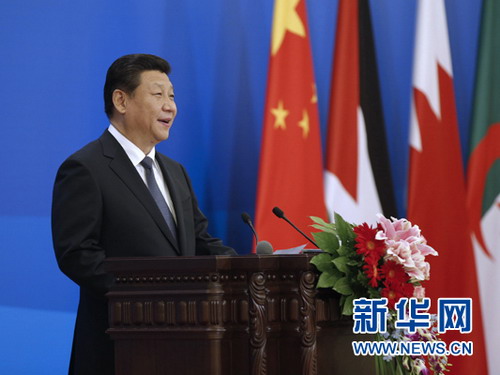Chinese President Xi Jinping's attendance at the first-ever China-Arab States Summit will be the largest and highest-level diplomatic event between China and the Arab world since the founding of the People's Republic of China, Chinese Foreign Ministry Spokesperson Mao Ning said at a press conference on December 7, 2022.
The "1+2+3" cooperation pattern proposed by President Xi has laid the framework of China-Arab states cooperation. The term was highlighted in the newly released report on China-Arab cooperation in the new era and was formerly stated in the first China's Arab Policy Paper issued in 2016.

President Xi Jinping delivers a speech at the opening ceremony of the sixth ministerial meeting of the China-Arab States Cooperation Forum in Beijing, June 5, 2014. /Xinhua
President Xi Jinping delivers a speech at the opening ceremony of the sixth ministerial meeting of the China-Arab States Cooperation Forum in Beijing, June 5, 2014. /Xinhua
When China proposed the Belt and Road Initiative in 2013, countries in the Middle East voiced unanimous support. In 2014, Xi emphasized that China and the Arab countries should jointly build the "Belt and Road" and establish the "1+2+3" cooperation pattern when delivering a keynote speech at the Sixth Ministerial Conference of the China-Arab States Cooperation Forum in Beijing.
The framework features one focus (energy cooperation), two priority areas (infrastructure and trade and investment facilitation), and three high-tech sectors for breakthroughs (nuclear energy, aviation satellites and new energy).